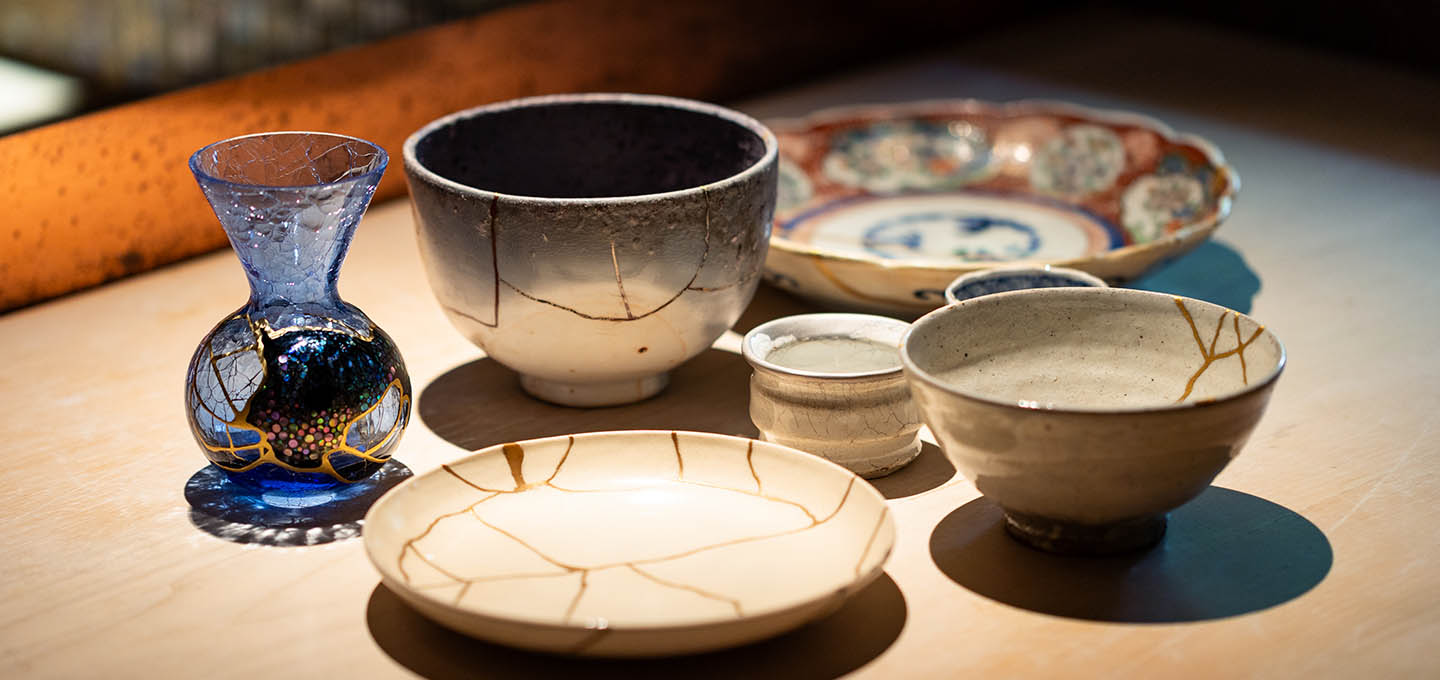
Special Experience
Kyoto
Learn Traditional Lacquer-based Kintsugi at a Historic Higashiyama Villa in Kyoto
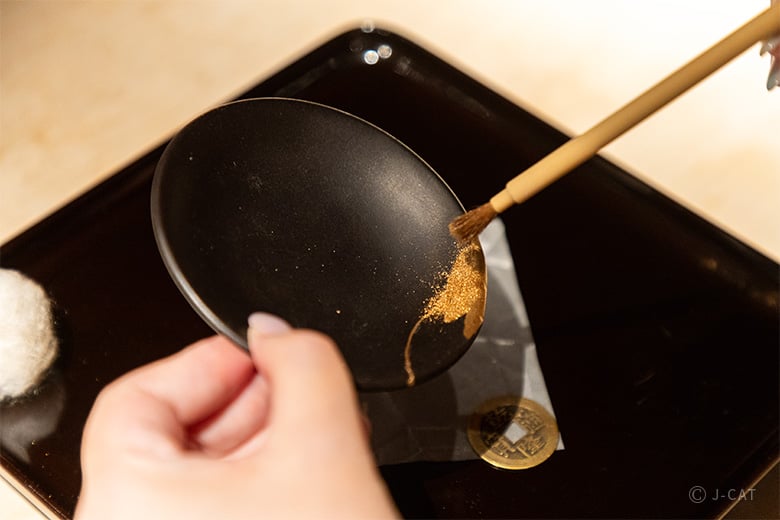
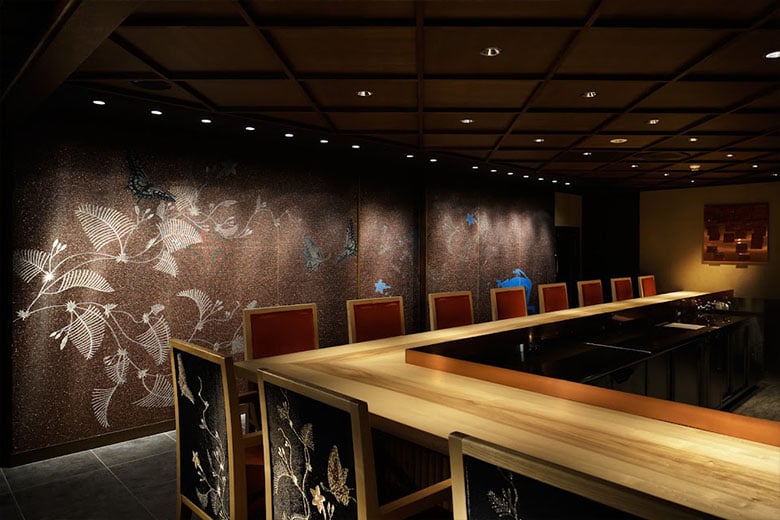
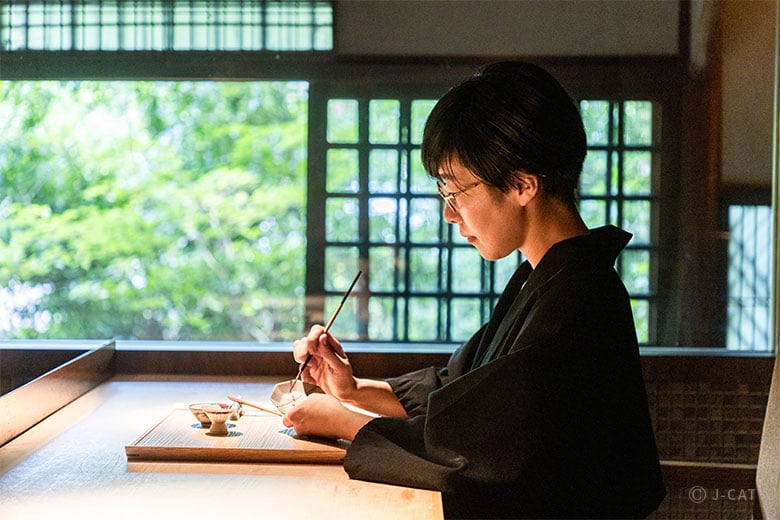
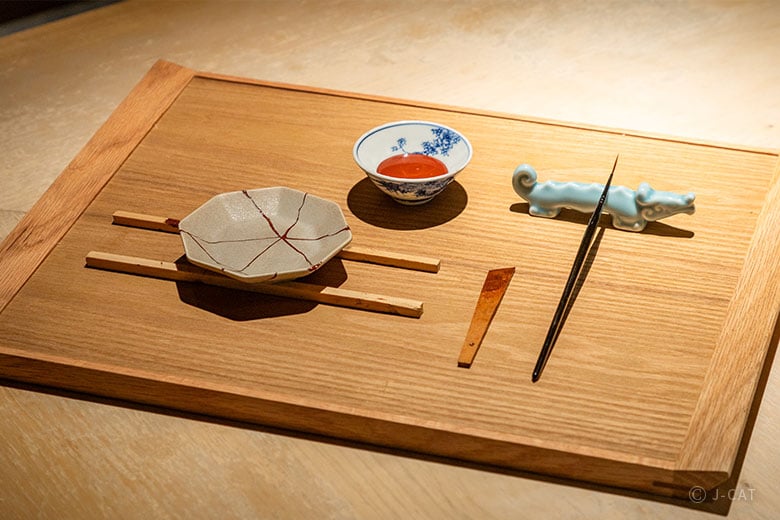
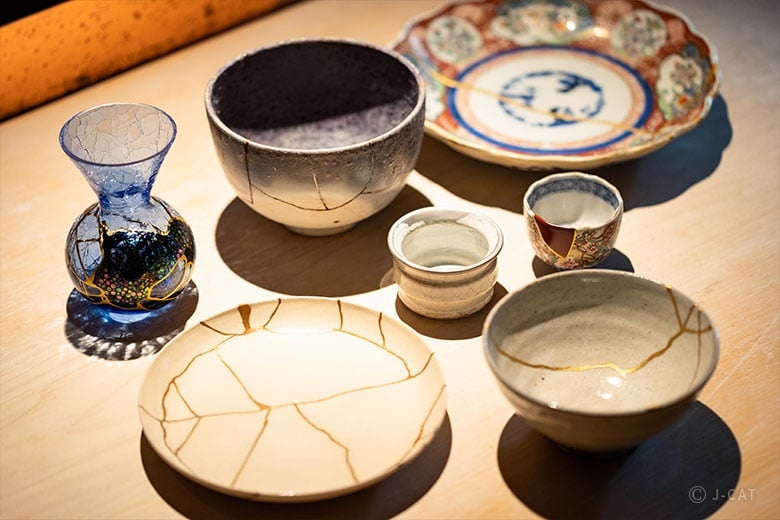
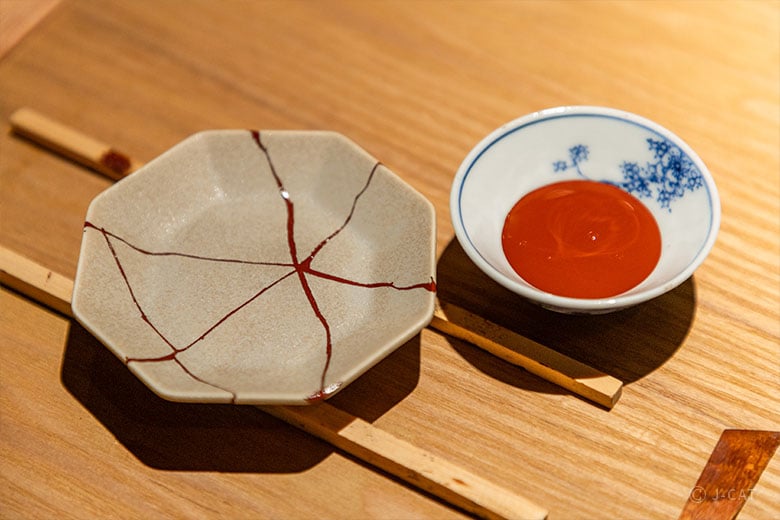
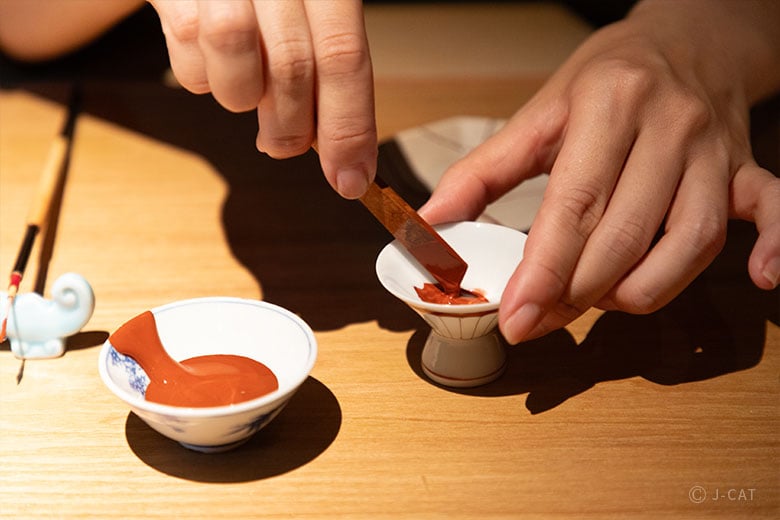
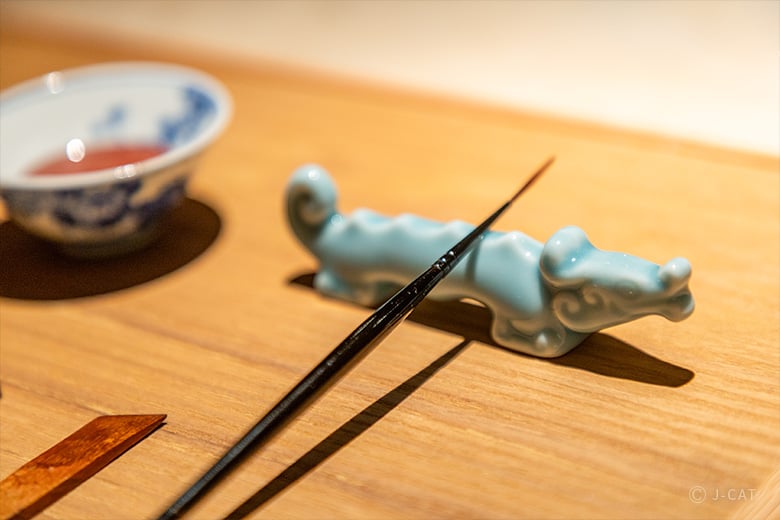
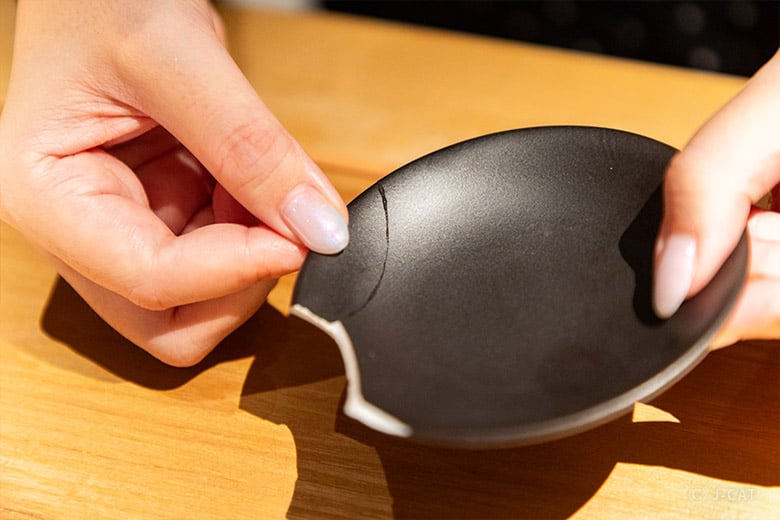
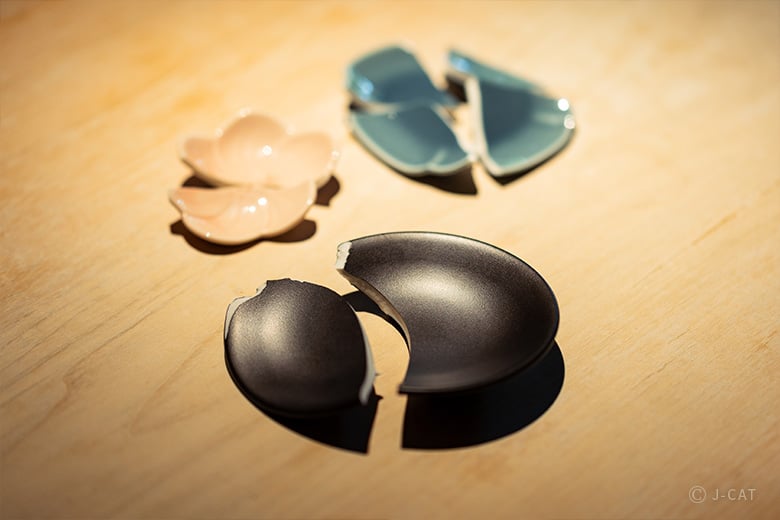
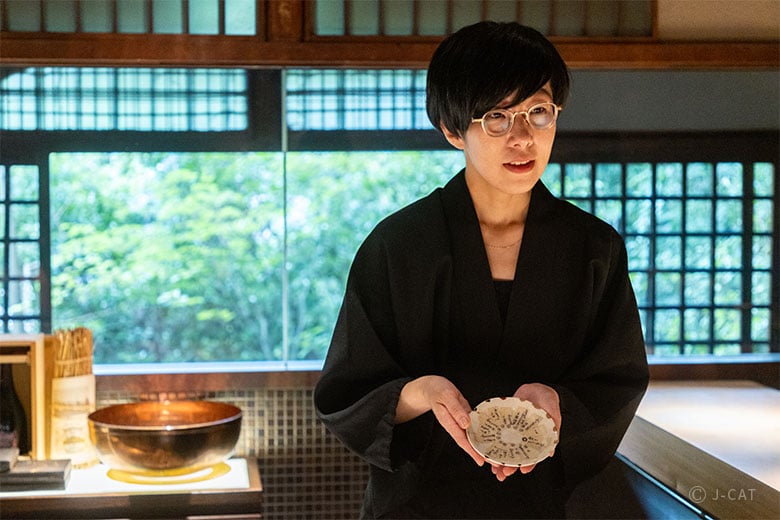
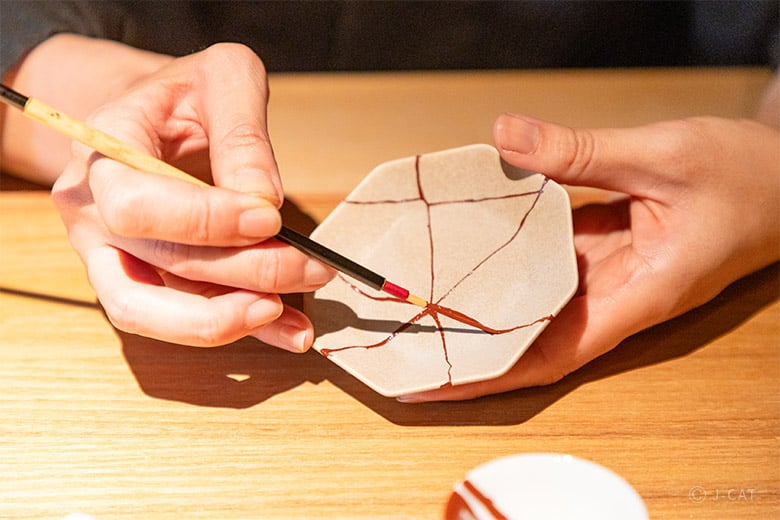
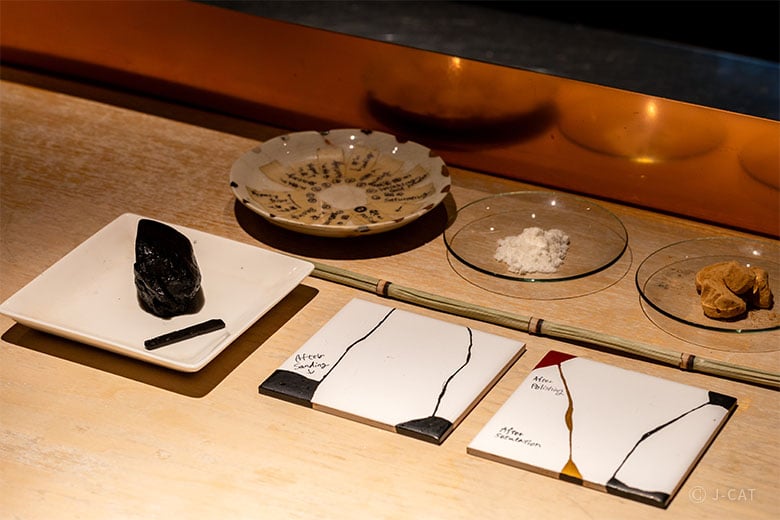
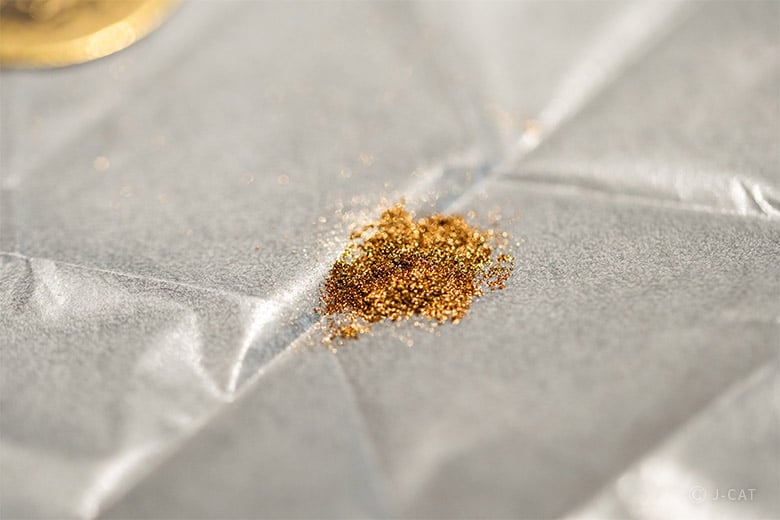
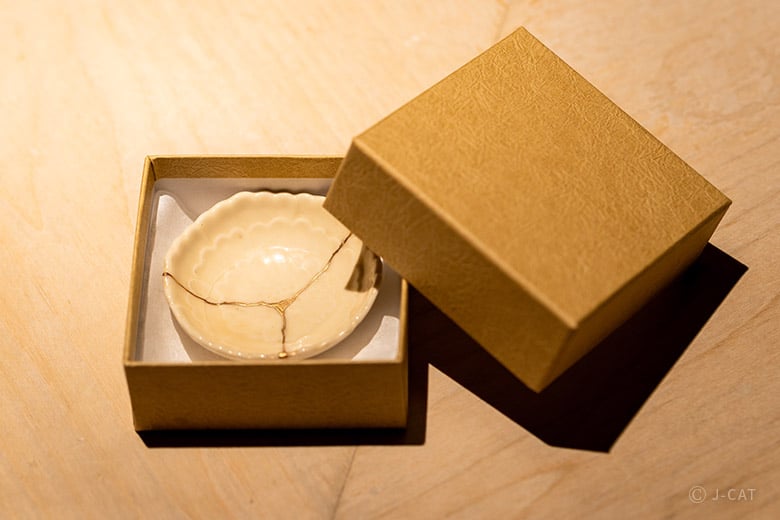
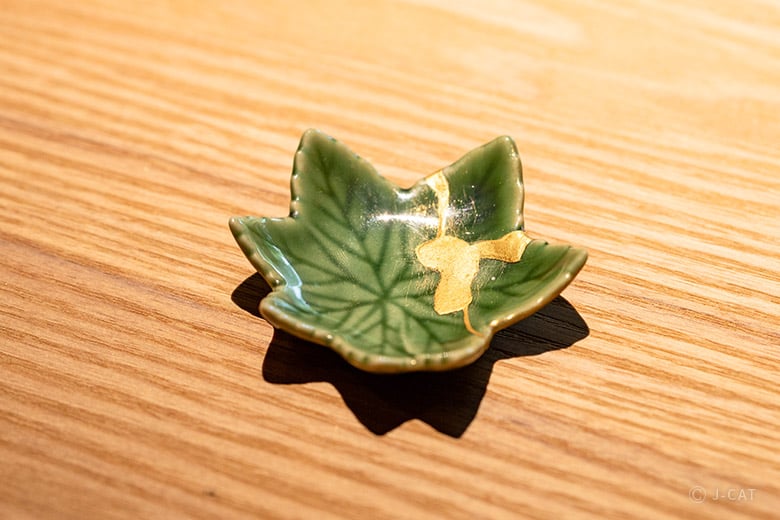
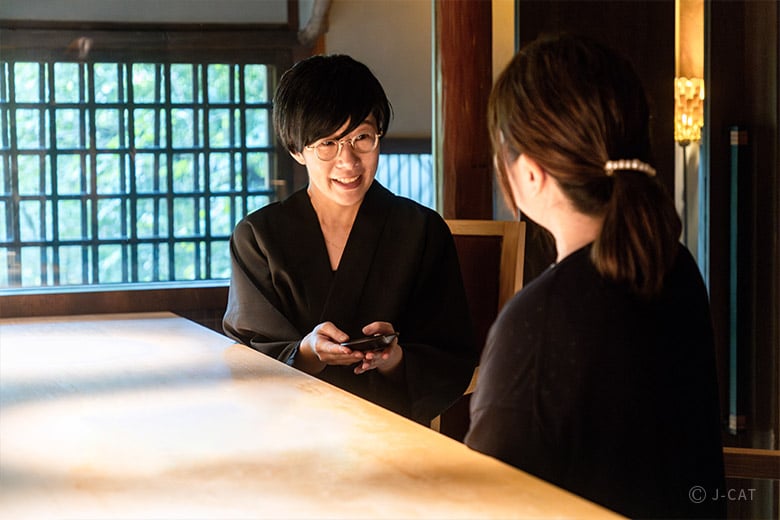
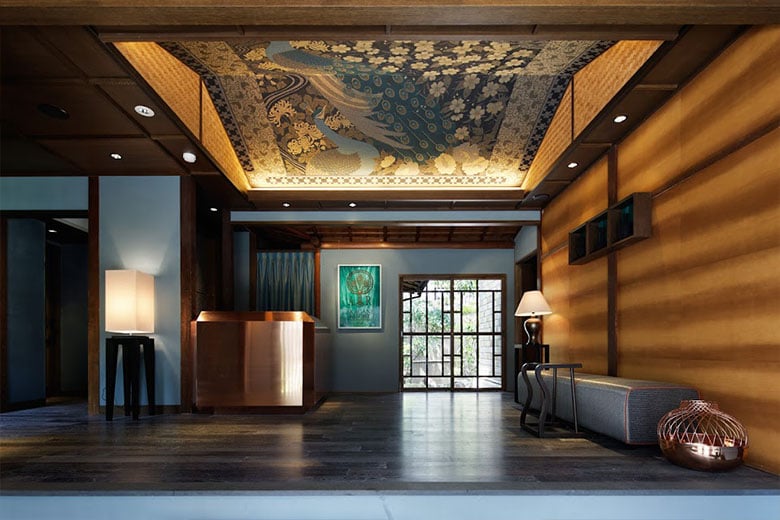
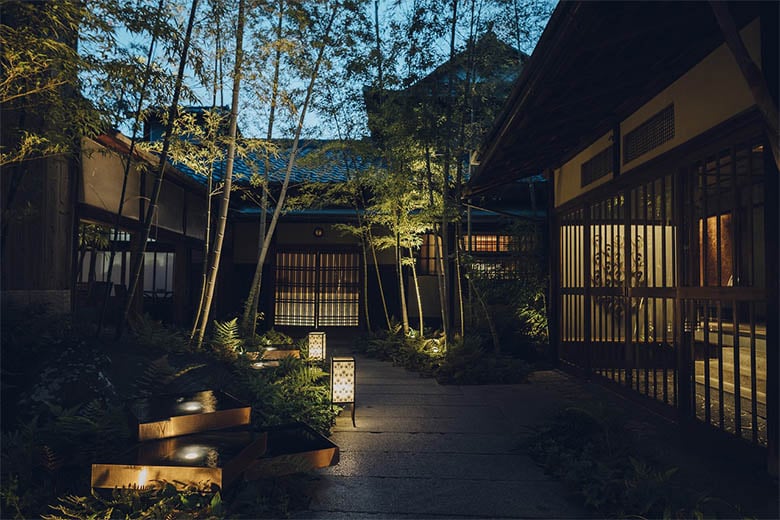
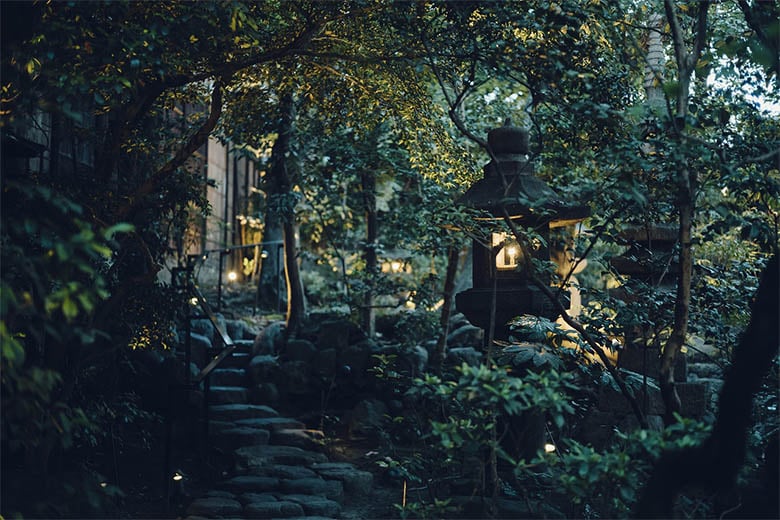




















Overview
Kintsugi – which literally translates to “gold bonding – is the traditional art of repairing broken ceramics through the application of urushi lacquer, with metallic powder sprinkled on top. In this experience, learn about the aesthetics and techniques of authentic kintsugi from globally active lacquer artist Mio Heki. Work with brass powder in an apt venue: the former residence of a copper magnate, experiencing Japanese traditions, history, and art through space and craft work alike. Use kintsugi to breathe new life into ceramic vessels and inspire yourself in a historic villa enveloped in gorgeous greenery.
Key Features
・Enjoy a private, hands-on kintsugi experience in Kyoto’s Higashiyama district with globally active lacquer artist Mio Heki
・Experience authentic traditional kintsugi incorporating some modern techniques, and take your work home with you on the day
・Immerse yourself in the refined atmosphere of a historic 1925 villa surrounded by the serenity of Higashiyama, where art, craft, and Kyoto heritage come together.
*You may also like this experience in the same location:
・Learn Suiboku-ga Ink Painting Privately from a Kyoto Artist
Kyoto
120mins
from ¥45,100 /person
1 - 4 participants
Available in English
Cancel free up to 11 days prior
Details
Learn Traditional Lacquer Kintsugi from a Lacquer Artist
The traditional craft of kintsugi uses urushi lacquer and metal powder to repair broken ceramic vessels and damaged art pieces, giving them a second life. Rather than covering up the original breakage or hiding the fact of repair, damage is converted into decorative lines of eye-catching metallic powder, highlighting an individuality and history through scars. This craft’s approach invokes a profound Japanese wabi-sabi philosophy toward existence itself that has garnered international popularity in recent years.

Works by Heki, born anew through kintsugi
Mio Heki is your instructor, an artist and restorer who works with lacquer and jewelry. She also runs the Atelier Hifumi workshop, which has restored national treasures and other registered important cultural properties. Heki has held original jewelry exhibitions and kintsugi classes in major cities across the globe.

“I hope people can experience Japan’s aesthetic sensibilities working in this quiet space surrounded by greenery,” says Heki
Though kintsugi has been widely adapted into more modern approximations with synthetic materials and simplified approaches, Heki’s work is characterized by the use of traditional materials and techniques to the maximal possible extent, such as urushi lacquer, which has been used in the art since ancient times. “I try to preserve Japanese tradition in its natural form,” says Heki.
Historical Tradition in a Modern Japanese Villa Emblematic of Higashiyama, Kyoto
The venue for this experience is Akagane Resort Kyoto Higashiyama 1925, set in one of Kyoto’s most popular areas for visitors. Originally built in 1925 as the villa of a copper processing magnate who headed a company in business since the Edo Period (1603-1868), the building was completely renovated in 2013 by a rising star in the world of interior design. Today, it welcomes guests as a wedding venue and restaurant.

A grand Nishijin silk peacock textile adorns the ceiling above the entrance
Leading kimono fashion designer Jotaro Saito lent his unique sensibilities to the decor, with textiles of Nishijin silk depicting magnificent peacocks beckoning visitors into an extraordinary space. Befitting the manor built for the head of a storied copper business, decorations of copper and brass also adorn the interior, adding gravity and splendor.

Extensive use of Nishijin silk decorations gives the interior a unique and luxurious charm
The in-house authentic French restaurant Kodaiji Kiwami is the experience venue. More of Saito’s Nishijin silk textiles can be found here, forming the chair back upholstery and bedecking the walls to create a truly one-of-a-kind atmosphere.
Delve Deep into Japanese Aesthetics and a Philosophy of Rebirth
Begin with a talk from Heki about kintsugi. As she explains, the art form flourished in Japan for two reasons. One was a broad traditional philosophy emphasizing awareness of nature’s blessings and the preciousness of things. The other was more specific: the popularity of chanoyu, or tea ceremony. The same traditional aesthetics and philosophies underlying kintsugi also pervade the latter, and tea vessels have traditionally been repaired in tea ceremony rather than replaced, as a way of finding wabi-sabi beauty in damage, aging, and decay. This gave kintsugi a natural place to shine, and nurtured sensibilities of respecting individual histories and finding beauty in cracks, chips, and other imperfections.

A sample repaired product, where the lines of breakage have become new beauty
Getting to witness Heki’s delicate restoration techniques up close is a highlight of this experience, as is the apropos use of brass powder, befitting the Akagane Resort’s history as the villa of a copper magnate.

Focus deeply as you apply lacquer to the seams to join with kintsugi
Primarily an alloy of copper and zinc, brass exhibits a rich golden sheen. Using it on repairs creates seams that pop, drawing the eye to give new life and unique personality. For an additional fee, participants can also choose to try kintsugi using real gold powder.
The Thrill of Creating with Your Hands
After Heki’s talk, it’s time to try kintsugi for yourself. Choose from a variety of broken vessels to find the one with the color, shape, and character that speaks to you. Heki mainly offers traditional pottery like Kyoto’s famous kiyomizu-ware.
You’ll use a thin bamboo stick to apply a bonding agent to the cracked edges and gently stick them together. When the adhesive has hardened, fill in the remaining gaps with putty and use sandpaper or a specialized knife to smooth and polish it. With Heki’s guidance, even absolute beginners can work confidently.

The finished look varies greatly depending upon the original break
When the bonding is complete, brush lacquer onto the fine seam and finish by sprinkling brass powder and brushing it gently with a special brush. Finally, rub in a circular motion with a cotton ball to smooth the surface. Experience the satisfaction of craft restoration and creation entirely by hand.

Enjoy the special feeling of focus that only craft work can offer, and the joy of completing something with your own hands
Purely traditional kintsugi is a process that takes several days to complete. This experience focuses on the main highlights of the process, allowing participants to experience the gist in a reasonable time frame and take home their completed product on the day.

Take home your work in its box, and let the lacquer set for a day (photo for illustration purposes only)
Bonding Hearts with Kintsugi
“Learning the art of kintsugi can be a chance to experience traditional Japanese aesthetics and expand the horizons of your own values and outlook,” says Heki. “I hope this can become a precious memory for you.” Breathe new life into fine tableware, and experience traditional beauty in a luxurious space that epitomizes the elegant charm of Kyoto’s Higashiyama district.

Share a moment with Heki, listening to her thoughts on lacquer art
Mio Heki / Akagane Resort Kyoto Higashiyama 1925

Mio Heki / Akagane Resort Kyoto Higashiyama 1925
Mio Heki
Purveyor of the Kyoto-based Atelier Hifumi, which produces kintsugi and lacquerware works, Heki is involved in restoration of works of historical architecture and ancient art, including national treasures and registered important cultural properties. She also exhibits her original jewelry and holds kintsugi classes across Japan and around the world. Noted for her use of highly traditional Japanese lacquer techniques, her craft skill has also garnered media attention.
Akagane Resort Kyoto Higashiyama 1925
A former late Taisho era villa residence designed with a fusion of traditional Japanese and early 20th Century Western architecture, located in the Important Traditional Building Preservation District of Kyoto’s Higashiyama area, this renovated historic structure today welcomes visitors as a restaurant, cafe, and wedding venue. As the former private residence of a copper magnate, art and design fixtures of copper and brass adorn its interior, imbuing the space with a gravitas and character that speak to the story of its roots. Its august entrance gate and the Higashiyama forest forming its backdrop still make it feel like a hideaway sanctuary.
Customer's Voice
We had a wonderful experience.
S.B. United States
Overall, programming was stellar. Enjoying a fully private kintsugi experience was the most memorable moment. We had a chance to be fully immersed in the session, with Mio’s attentive guidance and knowledge. Her explanation of the art of kintsugi and the history and materials used was A+. I would highly recommend any friend register for an experience like this. The scenic location, the professional guidance and the memento you get to bring home all lend to a unique activity you can’t find anywhere else.
M.C. United States
A wonderful introduction to a fascinating art form in a beautiful environment by a kind and talented instructor. The setting was spectacular, the materials were well prepared and organized, and the time was spent in a valuable fashion. The artist, Mio, was lovely and gave us a wonderful introduction to the art of Kintsugi.
L.L. United States
Location
Akagane Resort Kyoto Higashiyama 1925
Higashiyama Ward, Kyoto
Request for booking
Select first preferred date (JST)
January 2026
Sun
Mon
Tue
Wed
Thu
Fri
Sat

Instant Booking

Request Booking

17
Full

17
Unavailable
Kyoto
120mins
from ¥45,100 /person
1 - 4 participants
Available in English
Cancel free up to 11 days prior
Things to know
Contact Us
If you have any questions, please contact us using the form below.
We also accept bookings from corporate clients and travel agencies.